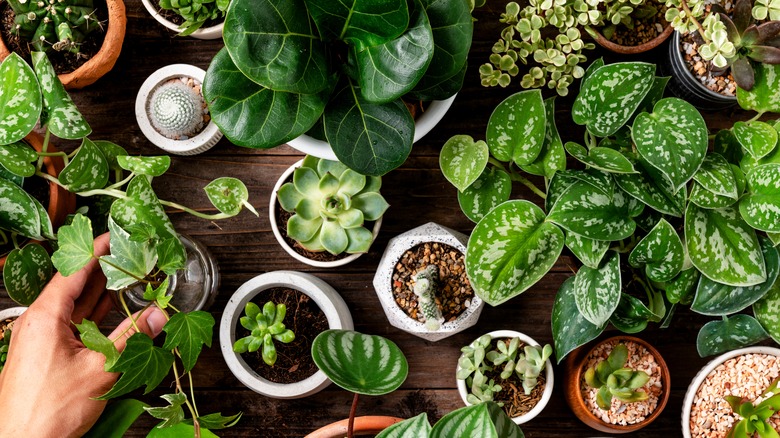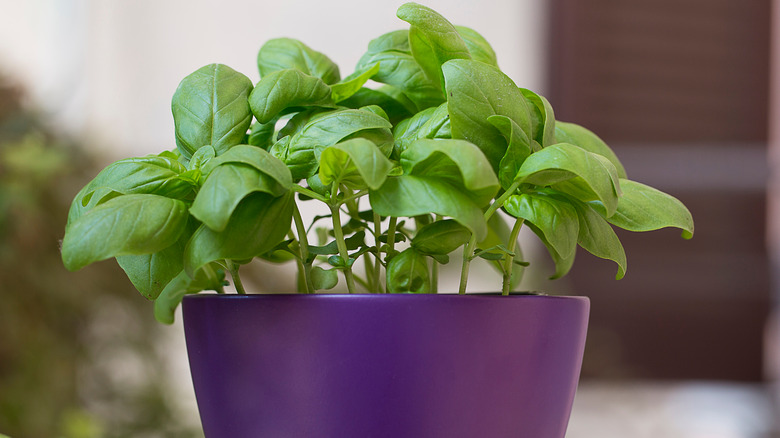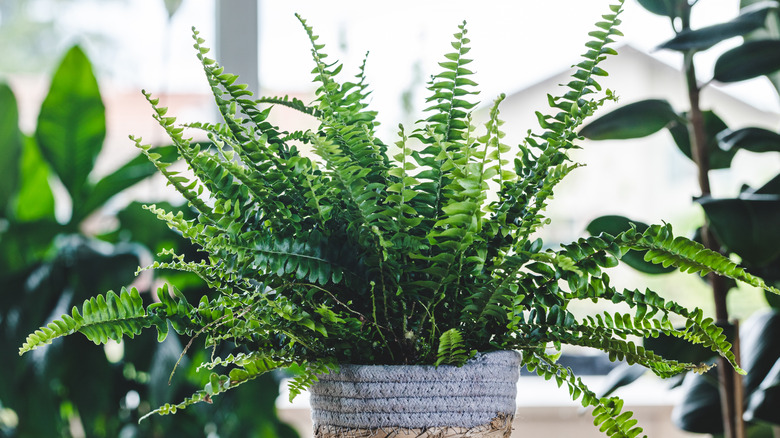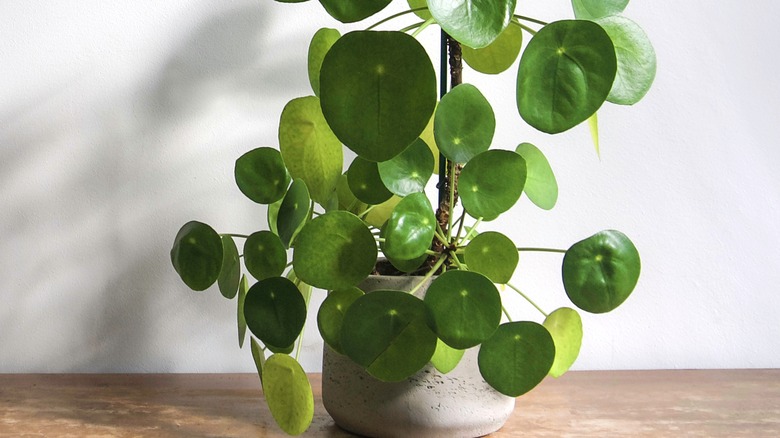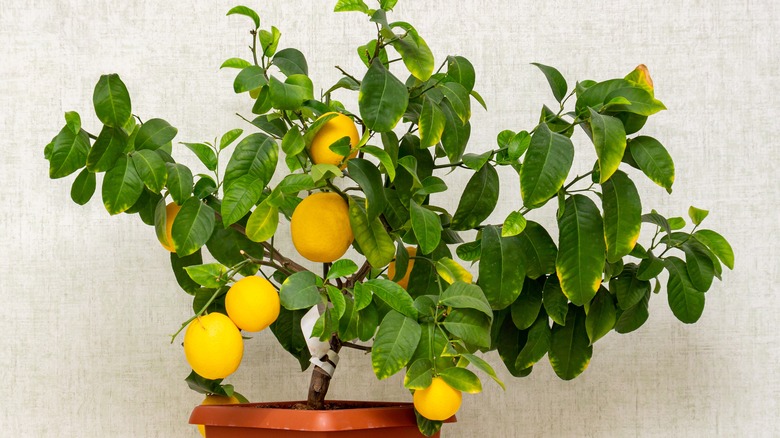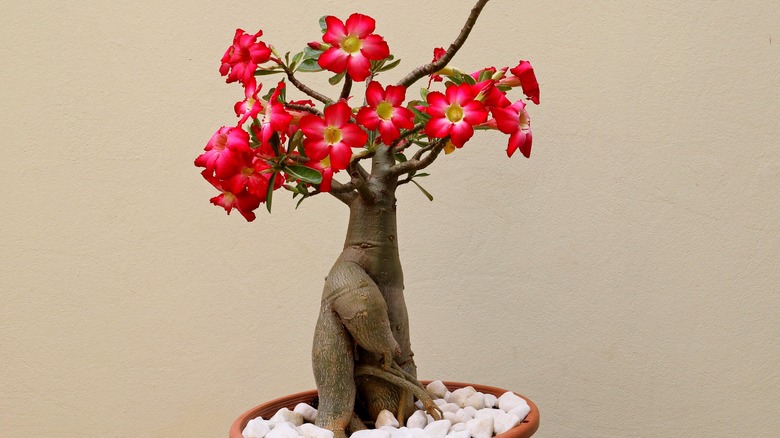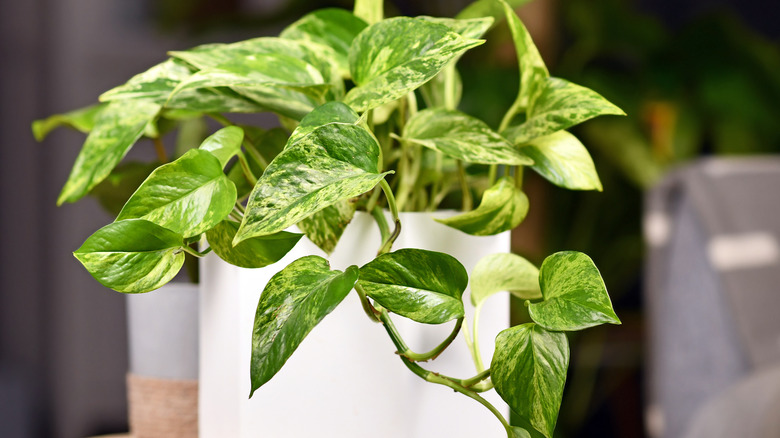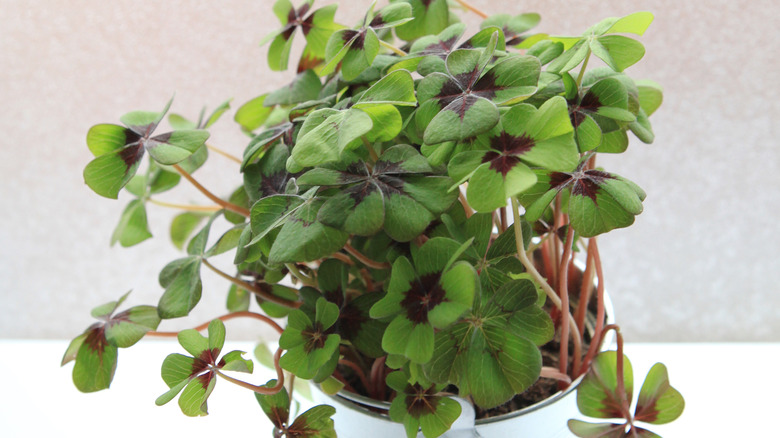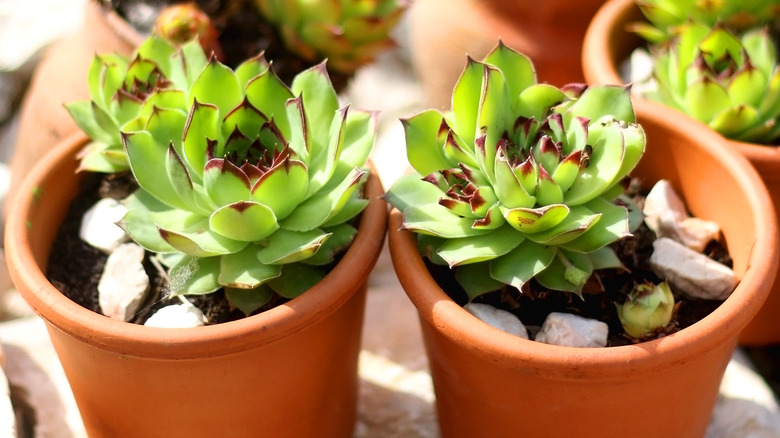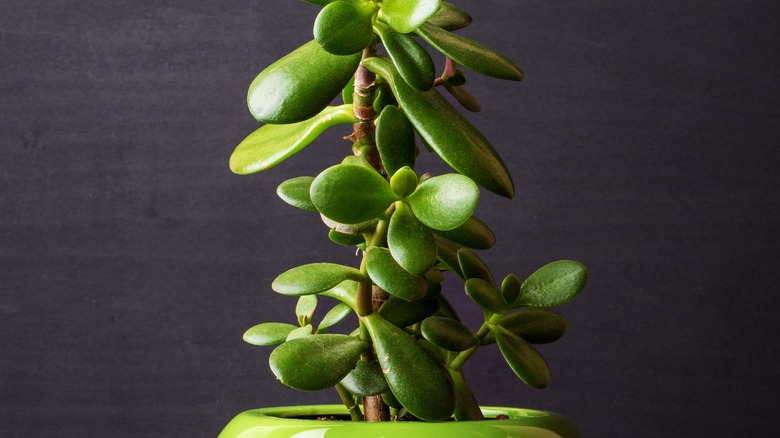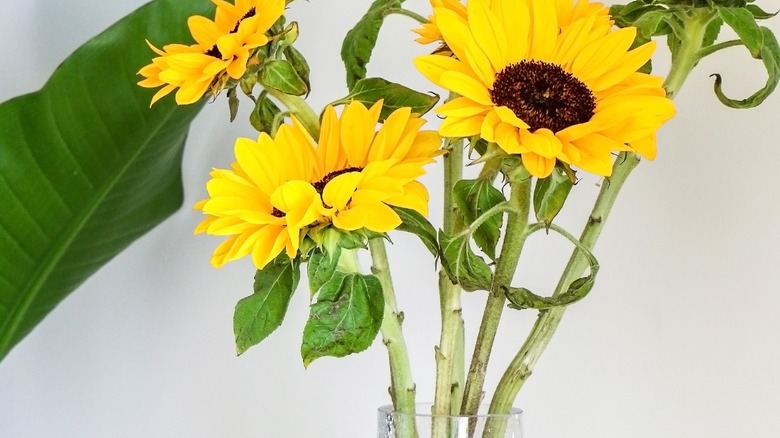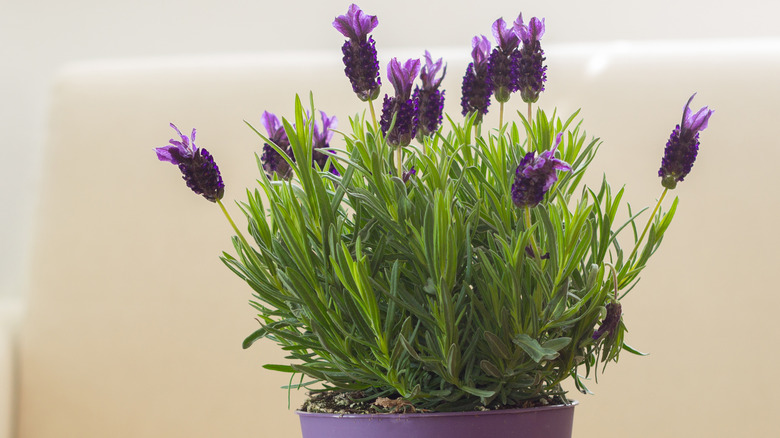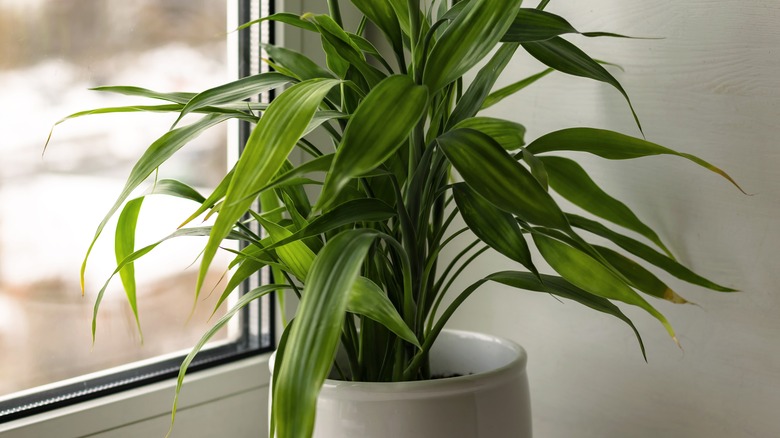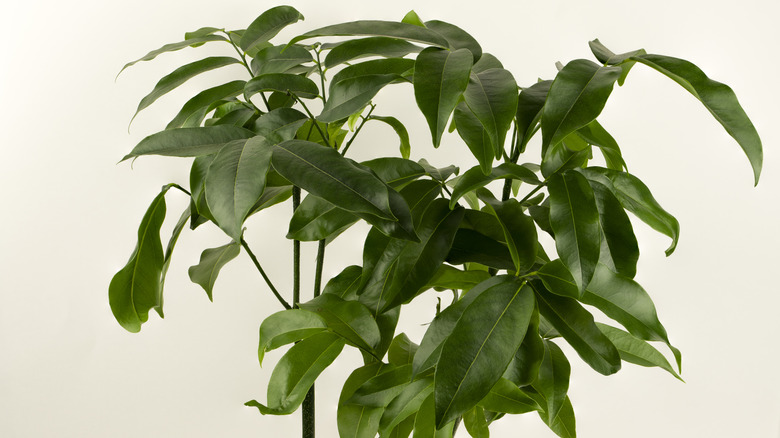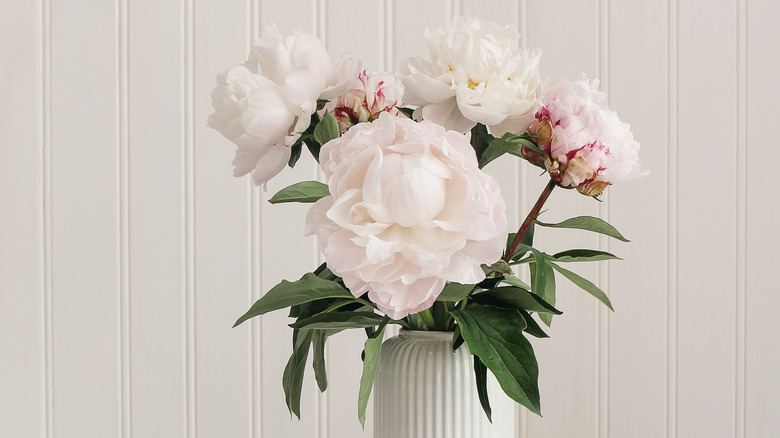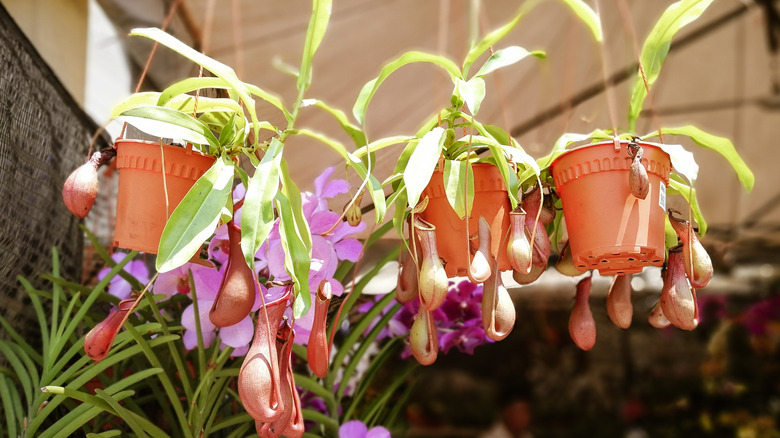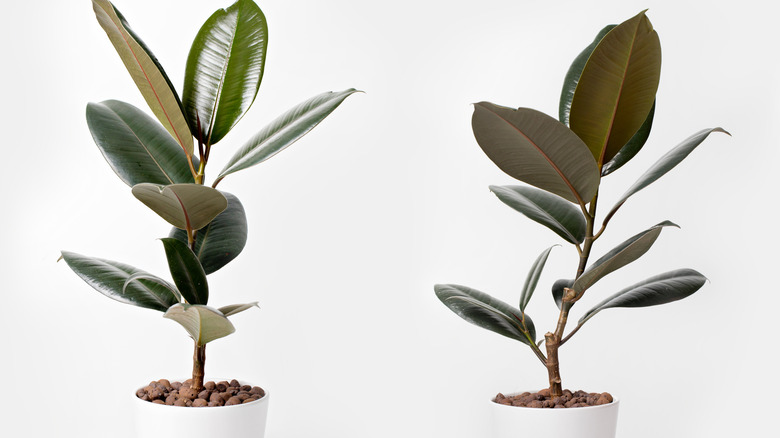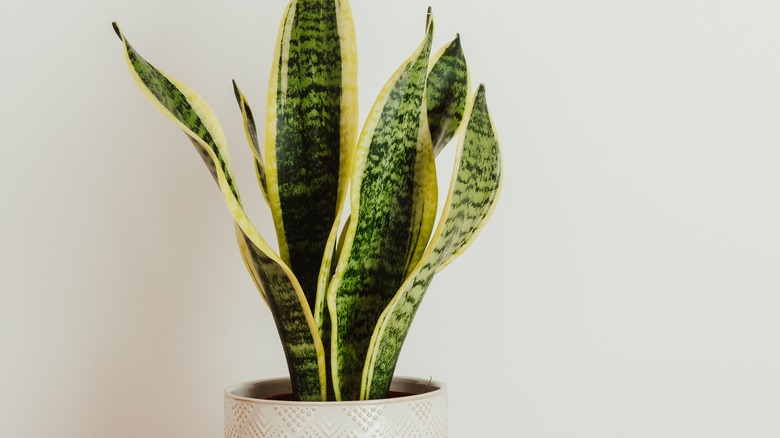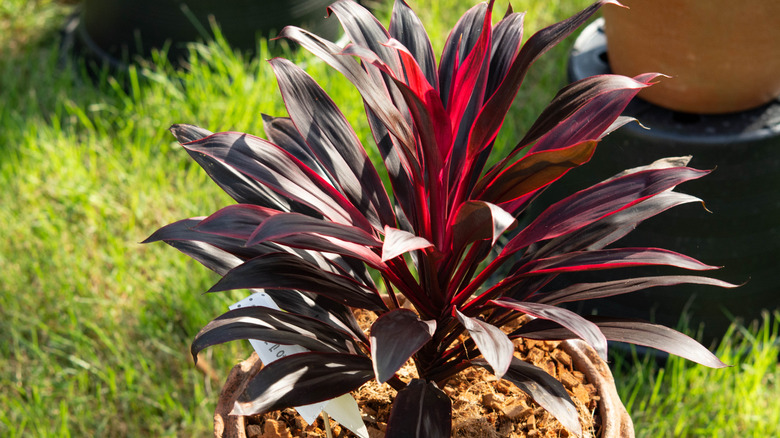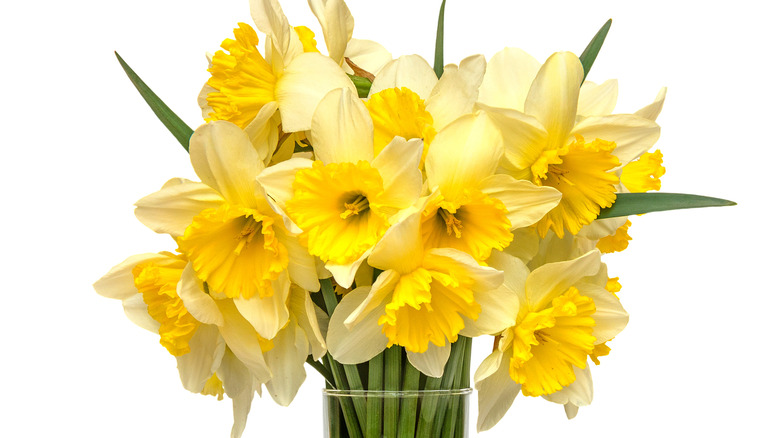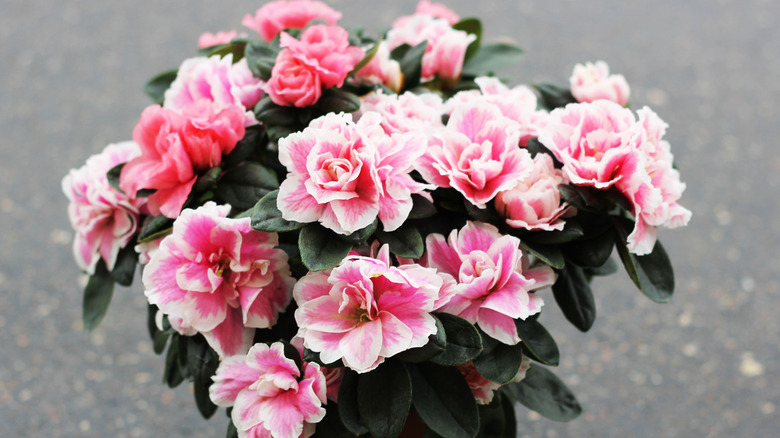20 Houseplants That Can Bring You Good Luck
It's a plant person fact that you can never have too many houseplants. Greenery improves air quality and can even help combat climate change if you patronize your local stores and raise them in an eco-friendly way, suggests Biofriendly Planet. In fact, a 2017 study published in the International Journal of Built Environment and Sustainability also proved that houseplants have both psychological and physiological benefits. And most impressive of all, some houseplants are also considered to bring you good luck.
While science doesn't prove this, some cultures believe that certain plants improve your luck in specific areas of your life. These beliefs stem from various modern day cultures worldwide as well as older civilizations such as the Greeks. A few of these houseplants come with specific placement requirements followed by the founding cultures, but these are easy to follow and won't make caring for your plant any harder. Here are 20 houseplants that may just bring you a little luck, plus some best practices regarding how to care for them.
1. Basil
Various cultures have different beliefs about the basil plant (Ocimum basilicum). The Greeks believe that basil represents fertility, while others, such as the Chinese, believe it safeguards your home and attracts luck, explains Maria Liberati. Regardless of which you believe, the one fact that remains true is that basil is a tasty addition to most meals, and the next best thing to good luck is good food.
Bloom Season: Late summer
USDA Growing Zone: 10 to 11
Growing Conditions: Full sun
Soil Type: Rich, moist, and well-draining
Size: 18 to 24 inches tall and wide
2. Sword fern
Also called the Boston fern, the sword fern (Nephrolepis exaltata) is a tropical species that never loses its green color and is endemic to the Americas. The Chinese believe that sword ferns attract positive chi energy and good luck to the home. To gain optimal good fortune, the feng shui Bagua map states that sword ferns are best placed in the southeastern parts of your room, per Petal Republic.
Bloom Season: Does not flower
USDA Growing Zone: 10 to 12
Growing Conditions: Partial sun
Soil Type: Moist and well-draining soil
Size: 3 to 5 feet tall and wide
3. Money plant
The leaves of the Chinese money plant (Pilea peperomioides) are round and stacked atop each other like coins. This might be why some cultures believe they bring good luck and financial success, notes The Little Botanical. Even today, the plant is a feature in many homes and is almost compulsory to have at Chinese New Year. The money plant should be placed in the upper left wealth sector of your home.
Bloom Season: Rarely flowers
USDA Growing Zone: 9 to 11
Growing Conditions: Partial sun
Soil Type: Well-draining
Size: Up tp 12 inches tall
4. Lemon
Lemon trees (Citrus limon) are usually grown outdoors, but with a bit of tending, you can maintain an indoor lemon tree under 5 feet tall in a container. According to Garden Tabs, in feng shui, it is believed that lemon trees (and citrus plants in general) attract good luck, fortune, and positivity. Lemons can be a valuable meal addition and even help to repel bugs naturally.
Bloom Season: Spring
USDA Growing Zone: 8 to 11
Growing Conditions: Full sun
Soil Type: Well-draining
Size: Dwarf varieties grow up to 7 feet tall
5. Desert rose
The desert rose (Adenium obesum) is a gorgeous flowering plant that requires little care, making it a perfect house ornament. Desert roses are believed to bring good luck, wealth, and financial success because their thick trunks and roots signify abundance (via National Parks Board of Singapore). Despite this belief, you should take care when tending to this plant because all its parts are toxic and can be dangerous if ingested.
Bloom Season: Summer
USDA Growing Zone: 11 to 12
Growing Conditions: Full sun
Soil Type: Sandy and well-draining
Size: 3 to 9 feet tall and 3 to 5 feet wide
6. Golden pothos
The golden pothos (Epipremnum aureum) is found in tropical and subtropical regions and signifies wealth and abundance in some Chinese cultures (per Garden Tabs). The Chinese believe this plant will increase your luck and financial success while welcoming positive energy into your home. To adhere to feng shui customs, you should place the golden pothos in the left corner of your room.
Bloom Season: Does not flower
USDA Growing Zone: 10 to 12
Growing Conditions: Full sun and partial shade
Soil Type: Moist and well-draining
Size: 20 to 40 feet long
7. Clovers
Clovers (Trifolium repens) usually have three leaves, but the Celts believed that four-leaf clovers, in particular, brought good luck and fought off evil. Science may not agree that these clovers are lucky, but it does agree that they're pretty rare. According to Science Focus, a 2017 survey showed that only one in 5,000 clovers has four leaves, so they are definitely special.
Bloom Season: Spring and summer
USDA Growing Zone: 3 to 10
Growing Conditions: Full sun and partial shade
Soil Type: Moist and well-draining
Size: Up to 4 inches tall and 12 inches wide
8. Houseleek
Houseleeks (Sempervivum tectorum) were believed to be a source of good luck and protection against witchcraft in the ancient Roman Empire. They were believed to protect houses from being struck by lightning while bringing fortune and abundance to the inhabitants (via Planta). Houseleeks are easy to grow and a perfect lucky plant for someone without a green thumb.
Bloom Season: Summer
USDA Growing Zone: 3 to 8
Growing Conditions: Full sun
Soil Type: Sandy and well-draining
Size: Up to 6 inches tall and 20 inches wide
9. Jade plant
The jade plant (Crassula ovata) is quite popular in Asia because of the belief that it brings good luck and financial fortune. Some Asians believe jades signify growth, renewal, and prosperity, which is why they are commonly given as gifts, notes House T Home. Traditionally, jade plants are placed at the entrance or at the southeast corner of your home.
Bloom Season: Spring
USDA Growing Zone: 9 to 12
Growing Conditions: Full sun
Soil Type: Well-draining
Size: 3 to 6 feet tall, 2 to 3 feet wide
10. Sunflowers
Many cultures regard sunflowers (Helianthus spp.) as lucky, and some even believe that a wish made on a sunflower will come true. For example, the Chinese believe sunflowers attract good luck, while Native Americans believe they symbolize an abundant harvest (via Bloom & Wild). Sunflowers can be grown indoors and are sure to brighten your home when properly placed and cared for.
Bloom Season: Summer to fall
USDA Growing Zone: 8 to 10
Growing Conditions: Full sun
Soil Type: Well-draining
Size: 3 to 15 feet tall
11. Lavender
According to Sweetish Hill, lavender (Lavandula spp.) is considered a source of good luck and may even help manage blood pressure. The lavender genus contains over 40 flowering plants, usually grown as ornamental plants in temperate regions. These plants are easy to grow and are especially rewarding for their fragrant benefits, making them the perfect plant for beauty and good luck all in one!
Bloom Season: Summer
USDA Growing Zone: 5 to 9
Growing Conditions: Full sun
Soil Type: Dry and well-draining
Size: 2 to 3 feet tall, 2 to 4 feet wide
12. Lucky bamboo
The lucky bamboo (Dracaena sanderiana) is a gorgeous ornamental plant that looks like bamboo but isn't actually in the same plant genus or family. The Chinese believe that a lucky bamboo plant with 11 stalks brings good luck and financial prosperity (via Housing). Indian culture believes that bamboo stalks should be placed in the east corner of the room or in bedrooms.
Bloom Season: Winter and fall, but doesn't bloom indoors
USDA Growing Zone: 10 to 11
Growing Conditions: Partial shade
Soil Type: Moist and well-draining
Size: 1 to 5 feet tall and 1 to 2 feet wide
13. Moreton Bay chestnut
Moreton Bay chestnuts (Castanospermum australe) are known as lucky bean plants and gained popularity for their feature in the tale of "Jack and the Beanstalk" (via The Courier-Mail). Lucky bean plants are believed to bring good fortune where they are grown. One reason to get a lucky bean plant today is that they are evergreen and easy to care for.
Bloom Season: Summer
USDA Growing Zone: 8 to 12
Growing Conditions: Full sun or partial shade
Soil Type: Moist, high-grade soil
Size: Up to 80 feet tall outdoors, much smaller indoors
14. Peonies
Peonies (Paeonia lactiflora) are gorgeous flowers that come in red, pink, and white varieties. They represent good luck, wealth, and fortune but also signify desire and love, making them the perfect feature on a wedding bouquet. Some cultures even believe that an unmarried person can attract a suitable partner by placing their picture and a bouquet of red peonies in the living room, advises Feng Shui Tricks.
Bloom Season: Late spring to summer
USDA Growing Zone: 3 to 8
Growing Conditions: Full sun or partial shade
Soil Type: Sandy or loamy
Size: 2 to 3 feet tall and wide
15. Pitcher plant
The pitcher plant (Nepenthes spp.) is an umbrella name for a genus of carnivorous plants that thrive in warm climates. Despite their carnivorous natures, they are actually considered good luck. According to Housing, pitcher plants are believed to attract luck and financial wealth.
Bloom Season: Late spring to early summer
USDA Growing Zone: 11 to 12
Growing Conditions: Bright, indirect light
Soil Type: Moist
Size: Varies depending on species
16. Rubber tree
The rubber tree (Ficus elastica) is an important plant to both Chinese and Indian cultures as they believe that it attracts luck, wealth, and abundance (via Feng Shui Beginner). In Chinese culture, the plant is kept in the farthest left area of your home. Rubber plants also do a good job at purifying the air but should be treated with care as they can be toxic if eaten.
Bloom Season: Rarely flowers
USDA Growing Zone: 10 to 12
Growing Conditions: Partial shade
Soil Type: Moist and well-draining
Size: Up to 10 feet tall when grown indoors
17. Snake plant
The snake plant (Dracaena trifasciata), also known as the mother-in-law's tongue, is a houseplant with green spikes believed to scare snakes away. Impressively, the Chinese also believe that it attracts luck and promotes positivity. To reap the full benefits, you should place the snake plant at the corners of your room or at other locations where you need an energy boost, such as your office desk, per Snake Plant Care.
Bloom Season: Spring
USDA Growing Zone: 9 to 11
Growing Conditions: Partial sun
Soil Type: Sandy and well-draining
Size: Up to 6 feet tall
18. Ti plant
The ti plant (Cordyline fruticosa) is a flowering plant used in various herbal medicines and even used to prepare food in some cultures. The Hawaiians believe the ti plant has special powers and attracts luck, long life, and true love where it is grown, according to Maui Mike's. This plant offers a versatile ornamental flower that comes in green, purple, and even white varieties.
Bloom Season: Summer
USDA Growing Zone: 9 to 11
Growing Conditions: Full sun to partial sun
Soil Type: Well-draining
Size: 3 to 6 feet tall and wide
19. Narcissus
The narcissus genus (Narcissus spp.) contains more than 50 flowers, including yellow daffodils. These bright flowers bloom around the Chinese New Year and symbolize luck, new beginnings, and good fortune. Yellow narcissus in particular, are the perfect gifts to lift someone's spirits or signify good wishes, suggests Uni Guide.
Bloom Season: Late winter and early spring
USDA Growing Zone: 4 to 8
Growing Conditions: Full to partial sun
Soil Type: Moist and well-draining
Size: 6 to 12 inches tall
20. Azalea
Azaleas (Rhododendron spp.) are beautiful flowers that come in shades of pink, salmon, and yellow, and require little care once they are established. The Chinese regard these plants as symbols of luck and often gift them to loved ones, notes Symbol Sage. Azaleas are also considered a symbol of care and well wishes.
Bloom Season: Early spring to summer
USDA Growing Zone: 3 to 9
Growing Conditions: Full sun or partial shade
Soil Type: Well-draining
Size: 2 to 20 feet tall and wide depending on variety
